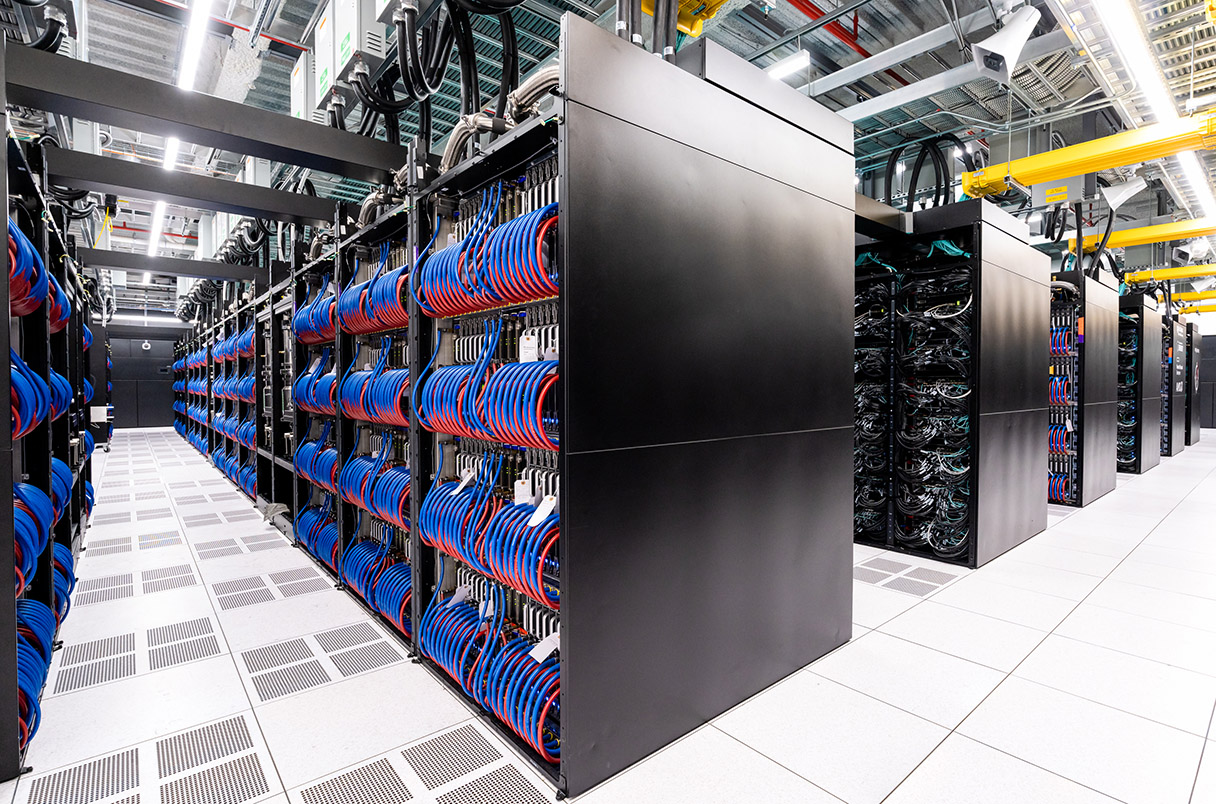Researchers at the University of Michigan have used the world’s most powerful supercomputer, Frontier, to simulate the behavior of up to 600,000 electrons within a microscopic chunk of a magnesium alloy. This breakthrough could lead to the design of lightweight alloys for fuel-efficient cars and airplanes. Frontier at the Department of Energy’s Oak Ridge National Laboratory can perform 1.1 billion billion operations per second. It is expected to be surpassed by Aurora, another US supercomputer, which will aid in designing more fuel-efficient airplanes and predicting patient responses to cancer treatments. Exascale Supercomputers are capable of 10^18 flops.
Advancements in Supercomputing with Exascale Supercomputers
Supercomputers have traditionally faced a trade-off between the number of electrons they can simulate and the accuracy of these simulations. However, the world’s most powerful supercomputers, known as exascale machines, are beginning to eliminate this trade-off. At a recent supercomputing conference, researchers reported simulating the behavior of up to 600,000 electrons within a microscopic chunk of a magnesium alloy with nearly the accuracy of a quantum Monte Carlo simulation. This breakthrough could open the way to designing novel lightweight alloys for fuel-efficient cars and airplanes.
Power of Exascale Supercomputers
Exascale supercomputers, such as the Frontier at the Department of Energy’s (DOE’s) Oak Ridge National Laboratory, are capable of 1.1 exaflops (10^18 flops), or 1.1 billion billion operations per second. This makes them more than twice as fast as the fastest machine from just 2 years ago. These machines promise to open a new window into materials, climate science, biology, and medicine. Frontier, which was completed in May 2022, contains more than 40,000 processors and consumes 21 megawatts of power.
International Developments in Supercomputing
While the United States has made significant strides in supercomputing, other countries are also pressing ahead with their own exascale efforts. For instance, an exascale machine named Jupiter is slated to come online in Germany at the end of 2024. Japan is planning an exascale upgrade to the Fugaku supercomputer for 2029, and France is currently planning to build an exascale system called Jules Vernes, although a release date has yet to be announced.
The Future of Supercomputing
The next leap in supercomputing is expected to be zettascale (10^21 flops) machines. However, achieving this will be challenging due to the slowing of Moore’s Law, which refers to the decades-long trend of steady shrinkage of transistors and other computing devices. Some potential solutions include relaxing the mathematical precision with which current computer chips make calculations, which could lead to a 10-fold improvement in processing power, and creating hybrid machines that incorporate emerging technologies such as quantum computers and systems tailored for machine learning and AI.
Funding Challenges in Supercomputing
Despite the exciting potential of supercomputing, funding remains a significant challenge. The DOE’s Exascale Computing Project (ECP) is due to sunset next month, which could result in job losses for hundreds of computer scientists and engineers. Concerns exist that this talent could be lost to companies like NVIDIA, Microsoft, and Facebook.
- “We broke through the accuracy-length scale barrier,” says Sambit Das, a mechanical engineer at the University of Michigan and a member of the team presenting the work.
- “There is a new science era that is unfolding,” says Ceren Susut, associate director for DOE’s Advanced Scientific Computing Research program.
- “China is opaque to us,” says Eric Stromaier, who helps assemble the biannual TOP500 list of the world’s most powerful supercomputers.
- “What exascale computers give us is an ability to get higher resolution for longer periods of time,” says Lori Diachin, principal deputy director of computing at LLNL.
- “All the low-hanging fruit is gone.” The biggest issue, hardware experts say, is that the decadeslong trend of steady shrinkage of transistors and other computing devices, known as Moore’s Law, has slowed considerably in recent years, says Christine Chalk, program manager for DOE’s Exascale Computing Project (ECP).
- “I don’t know what’s coming next, but I hope it will give us another boost,” says Jack Dongarra, a high performance computing expert at the University of Tennessee, Knoxville.
- “The fear is that talent will leave the DOE and go to companies like NVIDIA, Microsoft, and Facebook,” Dongarra says. “It’s a very hard thing to replace.”
Quick Summary
The world’s most powerful supercomputers, known as exascale machines, are now capable of simulating the behaviour of up to 600,000 electrons within a microscopic chunk of a magnesium alloy with near-perfect accuracy, a breakthrough that could lead to the design of novel lightweight alloys for fuel efficient cars and airplanes. These supercomputers, such as Frontier at the Department of Energy’s Oak Ridge National Laboratory, are also expected to open new windows into materials, climate science, biology, and medicine, marking the beginning of a new era in science.
- Researchers have used the world’s most powerful supercomputers to simulate the behaviour of up to 600,000 electrons within a microscopic chunk of a magnesium alloy. This was reported at SC23, a supercomputing conference in Denver.
- The team, including Sambit Das from the University of Michigan, used the Department of Energy’s (DOE’s) Oak Ridge National Laboratory’s Frontier supercomputer for the simulations. Frontier is the world’s first exascale supercomputer, capable of 1.1 billion billion operations per second.
- The simulations revealed how defects form in alloys, potentially leading to the design of lightweight alloys for fuel efficient cars and airplanes. They also provided insights into the unusual shapes of quasi-crystals, which could lead to novel magnetic materials and superconductors.
- Frontier is expected to be surpassed by Aurora, another U.S. exascale supercomputer at Argonne National Laboratory, and El Capitan at Lawrence Livermore National Laboratory. These machines are expected to aid in designing more fuel efficient airplanes, predicting patient responses to cancer treatments, and simulating nuclear explosions.
- Other countries, including Germany, Japan, and France, are also developing their own exascale supercomputers.
- The next leap in supercomputing is zettascale machines, but this will require significant advancements in technology and potentially a new influx of funding.


